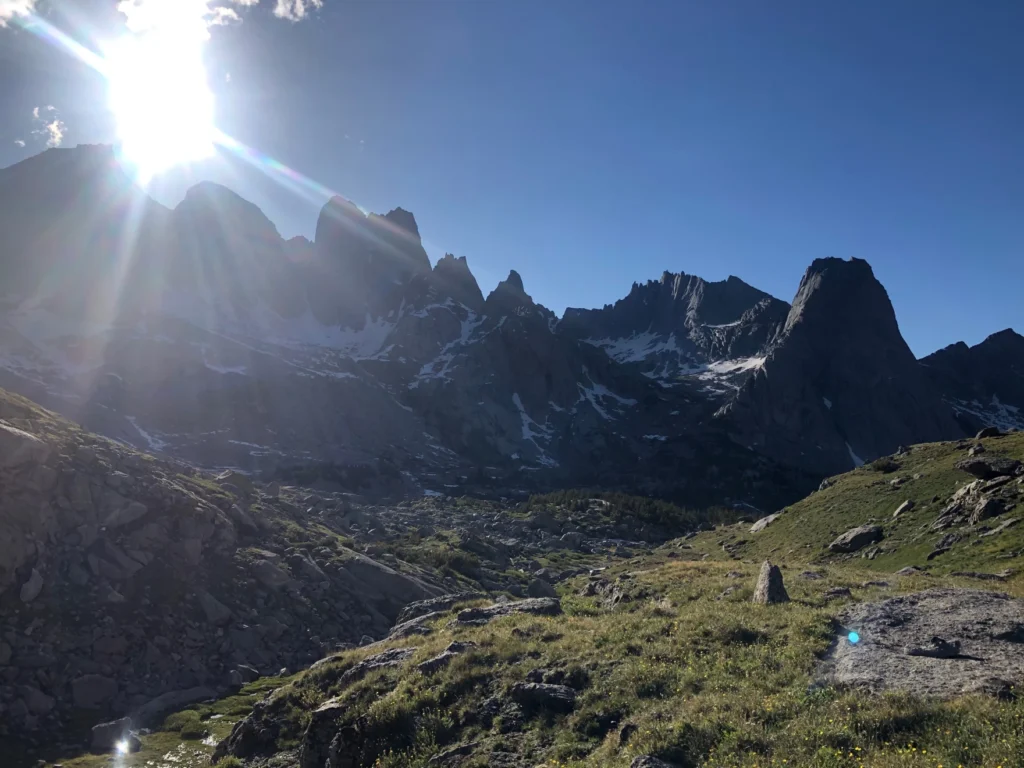Home / News / 2022-2023 News / Native students will collect new weather data in the Wind River Range
Native students will collect new weather data in the Wind River Range
Home / News / 2022-2023 News / Native students will collect new weather data in the Wind River Range
Native students will collect new weather data in the Wind River Range

Article courtesy of Wyoming Public Radio
This summer, Northern Arapaho and Eastern Shoshone college students will traverse the Wind River Range, collecting first of its kind weather data.
The project is called ‘New Voices in Climate’ and is part of Central Wyoming College (CWC) near the Wind River Reservation.
“We have a chronic problem of under-representation by Indigenous populations, and specifically here that Eastern Shoshone, Northern Arapaho having a voice in this wall of change that is coming their way, due to changing temperatures and impacts for water sources,” said Jacki Klancher, CWC’s Alpine Science Institute’s director of instruction and research.
The wall of change being less water availability in the future. Much of Wyoming’s water comes from snowmelt in the mountains, but Klancher said that is hard to predict, as we do not fully understand the weather patterns in the Winds. Big mountains can create microclimates that go undetected.
“It’s really difficult to provide accurate weather forecasting for microclimates so well protected by the mountains,” Klancher said. “And to capture all the subtleties of these various alpine glacial cirques, and even to ascertain accurate weather predictions.”
Fixed weather stations are not allowed in the wilderness, with a few exceptions, and so current high mountain data relies on stations in much lower elevations.
“We’re relying on interpolated data from stations that are positioned at far lower elevations and we’re basing our predicted weather and over the long term climatic trends on predicted changes as you increase in elevation,” Klancher said.
But she said if students are physically hiking through the Winds, they will be able to see what is happening and collect that data. Five or six students will spend three weeks in the mountains in August, hiking along the Continental Divide Trail. They will collect temperature, relative humidity and barometric pressure data by carrying weather sensors. They will also podcast their journey.
“My students here will tell you that’s inherent to the culture is to be a teller of stories and to pass on oral traditions,” Klancher said. “But now in the 21st century, we do it through not just sitting in a small group within a room, but through podcasting.”
The hope is to continue collecting this data over the years. Klancher said the National Weather Service is interested in using the project to help with their weather predictions.
Before hiking, the students are presenting their project at a conference in D.C. beginning on June 12.
2660 Peck Avenue
Riverton, WY 82501
(307) 855 – 2000
Campus Map
120 Enterprise Blvd.
Lander, WY 82520
(307) 332 – 3394
Campus Map
240 S. Glenwood St #124
P.O. Box 4795
Jackson, WY 83001
(307) 733 – 7425
Campus Map
302 W. Ramshorn
P.O. Box 175
Dubois, WY 82513
(307) 455 – 2625
Campus Map
© 2024 Central Wyoming College – All Rights Reserved